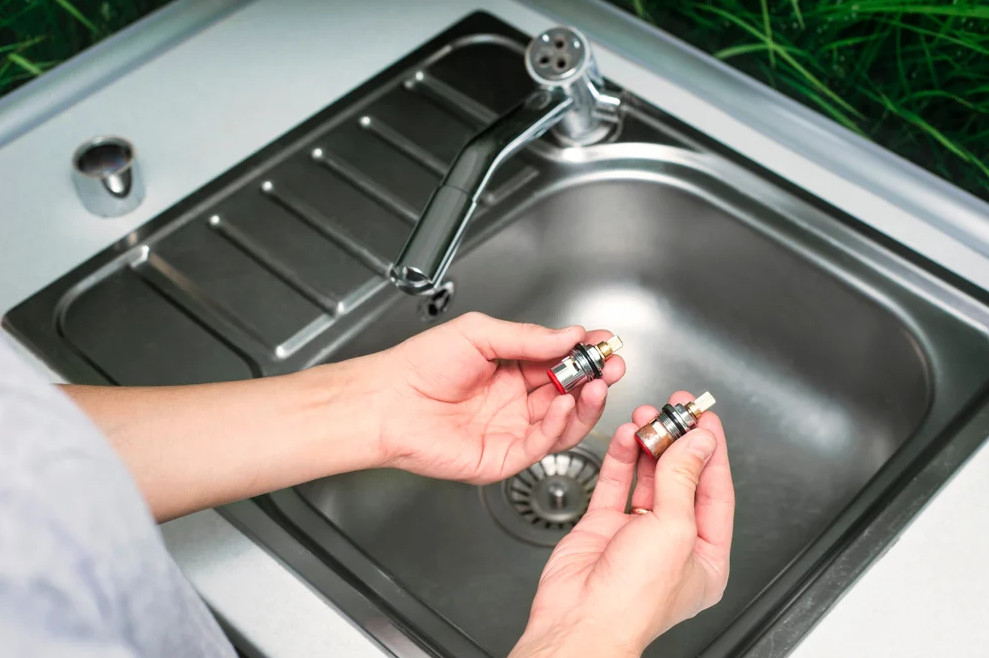
Faucets are an essential part of our daily lives, providing access to clean water for various activities. When a faucet starts to malfunction, it can disrupt our routines and be a source of frustration. One of the key components responsible for the smooth operation of a faucet is the cartridge. In this detailed guide, we will explore the signs that indicate a faulty faucet cartridge and discuss how to identify and address these issues effectively.
- Reduced Water Flow:
One of the most common indicators of a bad faucet cartridge is a noticeable reduction in water flow. Over time, sediments, minerals, or debris can accumulate within the cartridge, obstructing the flow of water. If you notice a decrease in water pressure or a slower stream than usual, it could be a sign that the cartridge needs attention.
To investigate this issue, start by removing the faucet aerator and inspecting it for any debris. If the aerator is clean and the problem persists, the culprit may be a clogged or deteriorating cartridge. In such cases, it’s advisable to remove the cartridge and clean or replace it as needed.
- Inconsistent Water Temperature:
A malfunctioning faucet cartridge can also lead to issues with temperature control. If you experience fluctuations between hot and cold water, or if the water refuses to reach the desired temperature, the cartridge may be at fault. Inside the cartridge, there are components responsible for mixing hot and cold water, and any disruption can result in inconsistent temperatures.
To assess the temperature-related issues, turn on the faucet and observe the water as it flows. If the temperature is inconsistent or doesn’t match the handle’s setting, the cartridge likely requires attention. In some cases, a simple cleaning might suffice, but if the cartridge is damaged, replacement may be necessary.
- Leaks and Drips:
Leaking faucets are not only an annoyance but can also lead to water wastage and increased utility bills. A faulty cartridge can be a common source of leaks. If you notice water pooling around the base of the faucet or dripping from the spout even when the faucet is turned off, it’s a clear indication of a problem.
To investigate a potential leak, inspect the faucet carefully. Tighten any loose connections, and if the issue persists, the cartridge may be damaged or worn out. Replacing the cartridge can often resolve leakage problems, preventing water waste and potential damage to surrounding fixtures.
- Difficulty Turning the Faucet Handle:
A worn-out or damaged faucet cartridge can result in difficulty turning the faucet handle. If you find yourself exerting more force than usual to turn the handle or if it feels loose and wobbly, it’s likely that the cartridge is compromised. The internal components of the cartridge may have deteriorated, affecting its ability to move smoothly.
To assess this issue, turn the faucet handle slowly, paying attention to any resistance or unusual movements. If you notice irregularities, it’s advisable to disassemble the faucet and inspect the cartridge. Lubricating the cartridge or replacing it can restore smooth handle operation and prevent further damage.
- Unusual Noises:
Strange noises coming from your faucet, such as rattling, squeaking, or grinding, can be indicative of a problematic cartridge. These sounds may occur when the internal components of the cartridge are misaligned or damaged, affecting their ability to function smoothly.
If you hear unusual noises while using the faucet, it’s essential to investigate the source. Start by isolating the noise to the faucet and then proceed to inspect the cartridge. Cleaning, lubricating, or replacing the cartridge can often eliminate these disruptive sounds and restore a quiet and functional faucet.
Conclusion:
A faulty faucet cartridge can manifest in various ways, from reduced water flow to leaks and handle difficulties. Recognizing the signs of a bad cartridge is crucial for timely maintenance and preventing further damage to your faucet. Regular inspection and prompt action can help ensure the longevity and efficient performance of your faucet, allowing you to enjoy a reliable and trouble-free water supply in your daily activities.
 WEWE Kitchen Faucets
WEWE Kitchen Faucets
Water not flowing. We change the cartridge and still the same problem, no water. After playing with the hose and faucet, I found that water comes out in spurts. I removed the head sprayer and water comes on the hose. I put the sprayer in a bowl of vineger for one hour, brush the head and reinse it, reattached the sprayer, and a spurt of water comes out and stop again. Is there anyway to pull the sprayer apart to locate the problem. I went and order another sprayer, do not know when it will come, San Leandro, CA
2025-06-225:36 下午